Photo credits: wildpixel via Getty Images/iStockphoto
In 1565, both St. Augustine, Florida, and the One-Drop Rule (ODR) were founded. From an American phrase, the one-drop rule developed into a legal term used to separate white people from everyone else.
It claims that anybody having even the slightest or most minor proof of black African descent cannot be considered white. Beginning with the Middle Passage and extending throughout the decades of American slavery, there were both forced and voluntary interracial relationships. During the Colonial era, free persons of mixed race (free people of color) were considered legally white if they had less than one-eighth or one-quarter African ancestry (depending on the state). Many mixed-race individuals were welcomed into the dominant culture based on their appearance, connections, and contributions to society.
If a person’s racial identification was questioned, his or her racial identity and community acceptance were more important factors than his or her proven ancestry. In the early colonial era, children born to one Indigenous and one non-Native parent had a white father and an Indigenous mother. This was due to the fact that the majority of the first colonists were male. Since many Native American tribes observed matrilineal kinship, it was believed that children were born into the family and clan of the mother. If they were raised in the culture, they were viewed as part of the community and considered to be Native Americans on their whole. Due to the fact that individuals in frontier regions migrated often before the Civil War, many people lacked documentation regarding their forebears.
Although the southern states of the former Confederacy adopted legal racial segregation in the late 19th century, legislators refrained from defining race in order to prohibit interracial marriages. During a discussion in South Carolina in 1895, George D. Tillman said, “It is a scientific fact that there is not a single pure-blooded Caucasian in this room.” Every person has a distinct mixture of… colored blood. An effort to dissolve or forbid marriage based on a remote, maybe an ancient trace of African ancestry would be a heinous injustice and the source of endless litigation, controversy, dread, hatred, and bloodshed. Controversy, malice, and greed would be permitted entry.
Prior to colonization, the notion of determining membership based on “blood” degree was and is unheard of in traditional cultures. Prior to the passage of the Indian Reorganization Act of 1934, Native American tribes relied on kinship, lineage, and family ties to identify tribal identity. Historically, a child born to an Omaha mother and a white father could only be officially adopted into the Omaha tribe by a male tribal member. Tribal regulations on citizenship and paternity may vary significantly amongst nations in the modern world. People having any proportion of African ancestry were expelled from the Chitimacha tribe in Louisiana between 1904 and 1919, and their descendants have not been permitted to join the tribe since then.
According to the One Drop Rule, a person must be categorized as black if they cannot claim non-white lineages, such as Native American, Asian, Arab, or Australian aboriginal. Infrequently has this concept of invisible/intangible participation in a “racial” group been extended to other non-European populations except those of Black African descent. American Poet Langston Hughes once wrote in an infamous denial of his American-perceived blackness:
“Unfortunately, I am not a black person of color. Our family has several unique blood types. In the United States, however, the word “Negro” applies to everyone with even a trace of Negro blood. In Africa, the phrase is more pristine. It refers to all negroes who are black. I’m a brown individual.”
During the American Civil Rights Movement of the 20th century, it was said that the stigma associated with black African heritage was a sociopolitical benefit. During the Jim Crow era, Tennessee adopted a one-drop limit, first in Tennessee in 1910 and subsequently in Virginia under the Racial Integrity Act of 1924. (including the approval of similar legislation in a number of other states) Texas and Arkansas joined the union in 1911, Mississippi in 1917, North Carolina in 1923, Alabama and Georgia in 1927, and Oklahoma in 1931. Florida, Indiana, Kentucky, Maryland, Missouri, Nebraska, North Dakota, and Utah maintained their original blood fraction rules de jure but modified the fractions (one-sixteenth, one-thirty-second) to be de facto equivalent to one drop. There have also been failed federal legal attempts to eliminate whiteness, such as Ozawa v. the United States in 1922.
By 1925, almost every state had passed a one-drop law or a comparable statute. These regulations enabled authorities such as Virginia’s Walter Plecker, Louisiana’s Naomi Drake, and others to classify mixed-race families as black. Before 1930, individuals of mixed European and African ancestry were referred to as mulattoes and, depending on the context, were classified as either black or white. The primary objective of the one-drop rule was to keep whites “pure” by prohibiting interracial relationships. The assumption that white intermixture will generate “better” blacks accompanied this line of thought. Even though the one-drop rule is unlawful (because the US Supreme Court struck down the Virginia Racial Integrity Act in 1967), the US Supreme Court affirmed the ODR in 1986 by declining to hear a lawsuit challenging Louisiana’s “racial” categorization rules as applied to Susie Phipps (479 U.S. 1002).
Several authors and journalists have made a fortune by “outing” as black famous historical mulattoes and whites who were considered white in their society, self-identified as such, and were culturally European-American, just because they confessed to having (often little) African ancestry (Patrick Francis Healy, Peter Ustinov, John James Audubon, Henriette Delille, and others). Due to the one-drop rule, several light-skinned persons may be classified as black. In most cases, a person’s white ancestry outnumbers their black ancestry. A mulatto person may have been categorized as black under slavery due to the one-drop rule. If they had subsequently produced a child with a white person, the infant would have been one-fourth black but remained classified as black.
In the course of American history, there have been several individuals who were more white than black yet were nevertheless categorized as black (Sally Hemings, Carol Channing, and G.K. Butterfield). However, these individuals are the exception rather than the rule. Technically speaking, the typical self-identified black American has at least 53 percent African ancestry. Fewer than 50 percent of the ancestry of less than 10 percent of black Americans is Sub-Saharan.
Reference:
Sweet, F. (2022, April 11). Encyclopedia of Arkansas. Encyclopedia of Arkansas; encyclopediaofarkansas.net. https://encyclopediaofarkansas.net/entries/one-drop-rule-5365/





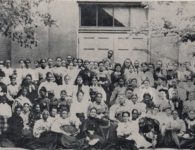
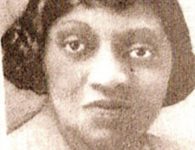

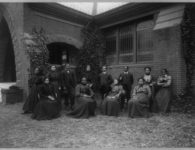
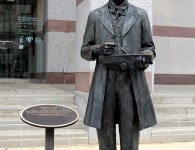



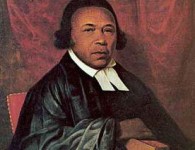

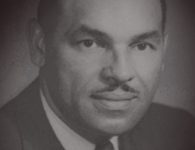





No comments